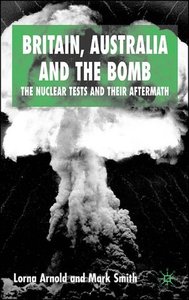
Operation Grapple was a set of four series of British nuclear weapons tests of early atomic bombs and hydrogen bombs carried out in 1957 and 1958 at Malden Island and Kiritimati in the Gilbert and Ellice Islands in the Pacific Ocean as part of the British hydrogen bomb programme. Nine nuclear explosions were initiated, culminating in the United Kingdom becoming the third recognised possessor of thermonuclear weapons, and the restoration of the nuclear Special Relationship with the United States in the form of the 1958 US–UK Mutual Defence Agreement.

Maralinga, in the remote western areas of South Australia, was the site, measuring about 3,300 square kilometres (1,300 sq mi) in area, of British nuclear tests in the mid-1950s.

Operation Hurricane was the first test of a British atomic device. A plutonium implosion device was detonated on 3 October 1952 in Main Bay, Trimouille Island, in the Montebello Islands in Western Australia. With the success of Operation Hurricane, Britain became the third nuclear power, after the United States and the Soviet Union.
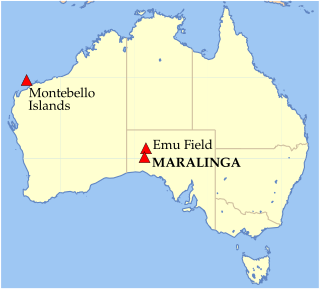
Between 1956 and 1963, the United Kingdom conducted seven nuclear tests at the Maralinga site in South Australia, part of the Woomera Prohibited Area about 800 kilometres (500 mi) north west of Adelaide. Two major test series were conducted: Operation Buffalo in 1956 and Operation Antler the following year. Approximate weapon yields ranged from 1 to 27 kilotons of TNT. The Maralinga site was also used for minor trials, tests of nuclear weapons components not involving nuclear explosions. Kittens were trials of neutron initiators; Rats and Tims measured how the fissile core of a nuclear weapon was compressed by the high explosive shock wave; and Vixens investigated the effects of fire or non-nuclear explosions on atomic weapons. The minor trials, numbering around 550, ultimately generated far more contamination than the major tests.
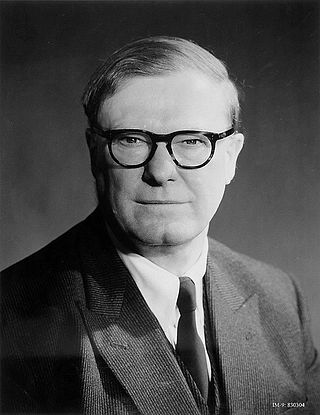
William George Penney, Baron Penney, was an English mathematician and professor of mathematical physics at the Imperial College London and later the rector of Imperial College London. He had a leading role in the development of High Explosive Research, Britain's clandestine nuclear programme that started in 1942 during the Second World War which produced the first British atomic bomb in 1952.

In 1952, the United Kingdom became the third country to develop and test nuclear weapons, and is one of the five nuclear-weapon states under the Treaty on the Non-Proliferation of Nuclear Weapons.
The McClelland Royal Commission or Royal Commission into British nuclear tests in Australia was an inquiry by the Australian government in 1984–1985 to investigate the conduct of the British in its use, with the then Australian government's permission, of Australian territory and soldiers for testing nuclear weapons. It was chaired by Jim McClelland.
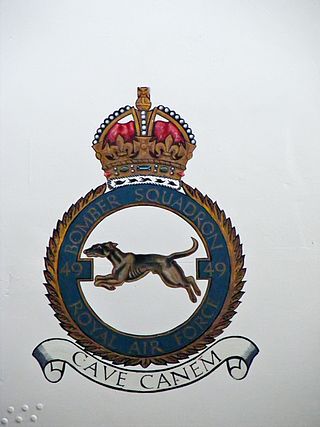
No. 49 Squadron was a bomber squadron of the Royal Air Force from 1938 to 1965. They were the first squadron to receive the Hampden in September 1938.
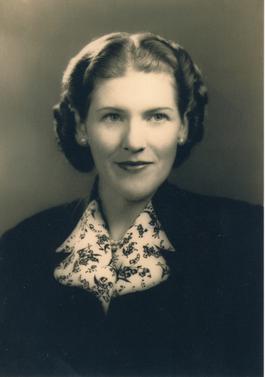
Lorna Margaret Arnold was a British historian who wrote several books connected with the British nuclear weapons programmes.
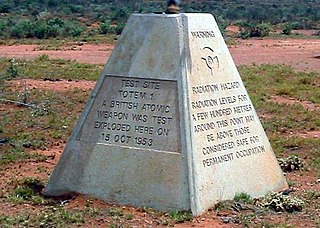
Operation Totem was a pair of British atmospheric nuclear tests which took place at Emu Field in South Australia in October 1953. They followed the Operation Hurricane test of the first British atomic bomb, which had taken place at the Montebello Islands a year previously. The main purpose of the trial was to determine the acceptable limit on the amount of plutonium-240 which could be present in a bomb.
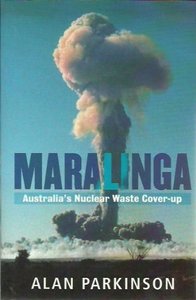
Maralinga: Australia's Nuclear Waste Cover-up is a book by Alan Parkinson about the clean-up of the British atomic bomb test site at Maralinga in South Australia, published in 2007.
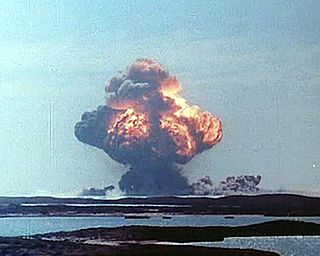
Operation Mosaic was a series of two British nuclear tests conducted in the Montebello Islands in Western Australia on 16 May and 19 June 1956. These tests followed the Operation Totem series and preceded the Operation Buffalo series. The second test in the series was the largest ever conducted in Australia.

The United Kingdom conducted 12 major nuclear weapons tests in Australia between 1952 and 1957. These explosions occurred at the Montebello Islands, Emu Field and Maralinga.

Following the success of Operation Grapple in which the United Kingdom became the third nation to acquire thermonuclear weapons after the United States and the Soviet Union, Britain launched negotiations with the US on a treaty under in which both could share information and material to design, test and maintain their nuclear weapons. This effort culminated in the 1958 US–UK Mutual Defence Agreement. One of the results of that treaty was that Britain was allowed to use United States' Nevada Test Site for testing their designs and ideas, and received full support from the personnel there, in exchange for the data "take" from the experiment, a mutual condition. In effect the Nevada Test Site became Britain's test ground, subject only to advance planning and integrating their testing into that of the United States. This resulted in 24 underground tests at the Nevada Test Site from 1958 through the end of nuclear testing in the US in September 1992.

The British hydrogen bomb programme was the ultimately successful British effort to develop hydrogen bombs between 1952 and 1958. During the early part of the Second World War, Britain had a nuclear weapons project, codenamed Tube Alloys. At the Quebec Conference in August 1943, British prime minister Winston Churchill and United States president Franklin Roosevelt signed the Quebec Agreement, merging Tube Alloys into the American Manhattan Project, in which many of Britain's top scientists participated. The British government trusted that America would share nuclear technology, which it considered to be a joint discovery, but the United States Atomic Energy Act of 1946 ended technical cooperation. Fearing a resurgence of American isolationism, and the loss of Britain's great power status, the British government resumed its own development effort, which was codenamed "High Explosive Research".
Walter Batchelor MacDougall was an Australian missionary and patrol officer who worked with the indigenous peoples in the desert regions of Western Australia and South Australia

Wallace John Challens, was a British scientist and civil servant. A graduate of University College, Nottingham, he began working at the Royal Arsenal in Woolwich in 1936. In 1939, he was transferred to the rocket department. After the defeat of Germany, he was sent to the United States as part of the British Scientific Mission to work on the V-1 flying bomb and the V-2 rocket. On returning to the United Kingdom in 1947, he was recruited by William Penney for the British atomic bomb project. He led the team that developed the firing circuits for the bomb used in Operation Hurricane, the first British nuclear test. He later developed a neutron generator. He took part in most of the British nuclear tests at Maralinga, and was the scientific director of the Operation Grapple tests in 1957. He subsequently became the AWRE's Assistant Director in 1965, Deputy Director in 1972, and Director from 1976 until his retirement in 1978.

In 1952, the United Kingdom was the third country to develop and test nuclear weapons, after the United States and Soviet Union. and is one of the five nuclear-weapon states under the Treaty on the Non-Proliferation of Nuclear Weapons.
Cecil Ernest Eddy was an Australian radiologist and physicist who pioneered X-Ray techniques for studying minerals and treating cancer. He was the director of the Commonwealth X-ray and Radium Laboratory from 1935 until his death in 1956.
Squadron Leader Edwin James George "Ted" Flavell was the pilot of the No. 49 Squadron RAF Vickers Valiant bomber which dropped Britain's first live atomic bomb during Operation Buffalo at Maralinga, South Australia, on 11 October 1956.
